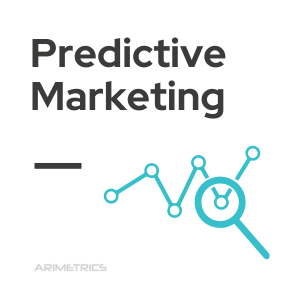Definition
Predictive marketing is an advanced data analytics technique that uses machine learning to identify patterns in customer behavior and then leverage those insights to create a more personalized and relevant experience for customers. Predictive marketing helps marketers anticipate the needs of their target audience, allowing them to deliver very targeted campaigns more successfully.
Types of predictive marketing
We can classify the following types of predictive marketing:
- Sentiment Analysis: This predictive marketing technique is based on the collection, analysis and classification of information that consumers share in online communities and on social networks. Through this technique, you can determine the opinions, attitudes and emotions of consumers towards a brand, product or service.
- Market Segmentation: This predictive marketing technique consists of identifying subgroups within a market through data analysis. Depending on different variables (age, gender, educational level, income, etc.), consumers can be divided into different segments and offer them more personalized proposals.
- Predictive modeling: This technique uses statistical models and machine learning algorithms to predict future consumer behavior. Predictive modeling relies on historical consumer information and data collected in real time to predict their future actions and anticipate their needs.
What predictive marketing is used for
Predictive marketing is used to predict the future behavior of consumers, with the aim of establishing stronger relationships with them and creating more effective and relevant marketing campaigns. This technique uses statistical models and machine learning algorithms to process large amounts of data in real time and obtain instant insights into how consumers act and how to respond to it.
Advantages of predictive marketing
Among the benefits of predictive marketing we can highlight:
- It allows you to identify the most profitable customers to establish stronger relationships with them. This is achieved by analyzing purchase history, website behavior, and other brand-related activities.
- It allows marketers to create more effective and relevant campaigns, which translates into a higher return on investment. By using predictive models, you can identify the offers and promotions that will have the greatest impact on the target audience.
- Reduces the risk of errors and failures in marketing campaigns. Predictive models allow testing of different scenarios and options, allowing marketers to adjust and refine their strategies before launching them to market.
- It helps businesses keep up with market trends and customer preferences in real time. By processing large amounts of data in real time, companies can get instant insights into how their customers act and how to respond to it.
- Improve marketing efficiency and effectiveness by reducing waste of resources on unsuccessful campaigns. By knowing their target audience better, companies can create more accurate and effective campaigns, and avoid investing in those that will not be effective.
How to do a predictive marketing study
Steps to make a predictive marketing forecast:
- Collect data about customer behavior, preferences, and purchase histories.
- Analyze collected data using sentiment analysis, market segmentation, and predictive modeling techniques.
- Identify the most profitable customers and build stronger relationships with them.
- Create more effective and relevant campaigns based on information gained from data analysis.
- Test different scenarios and options before launching campaigns to the market.
- Monitor customer behavior in real time to keep abreast of market trends and customer preferences.
- Adjust strategies as needed to achieve maximum efficiency and effectiveness of campaigns.
